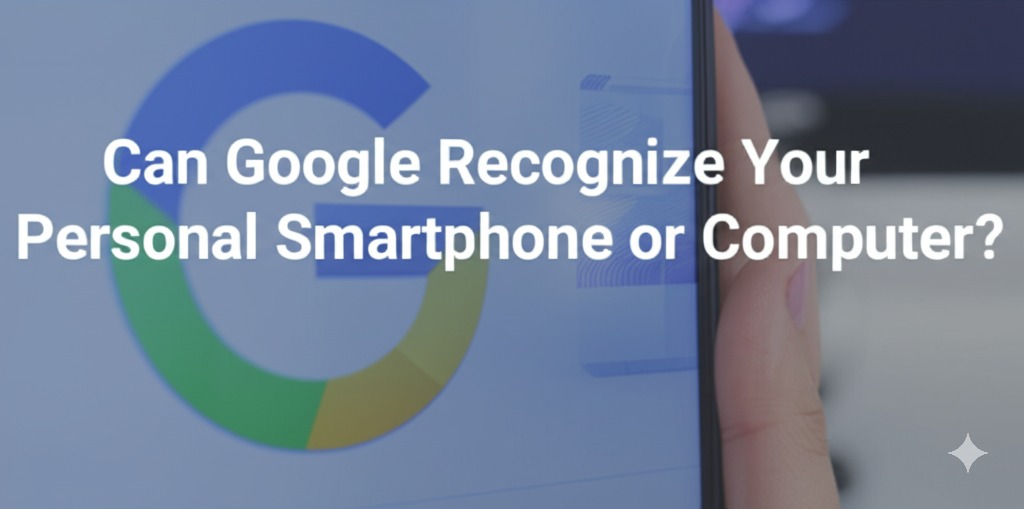In today’s digital age, our smartphones and computers are our gateways to the internet. We rely on them for everything from shopping and socializing to banking and business. With Google being the go-to search engine for millions of users worldwide, it’s natural to wonder: Can Google recognize your personal smartphone or computer?
This question touches on the topic of user privacy, tracking, and personalization. In this article, we’ll explore how Google identifies devices, how it tracks users, and the privacy implications of these practices. By the end, you’ll have a clear understanding of how Google interacts with your personal devices and what you can do to protect your privacy.
How Does Google Recognize Devices?
Google uses several methods to identify devices, including IP addresses, cookies, and device-specific information. Here’s a breakdown of each method:
1. IP Addresses and Geolocation
Your IP address is a unique identifier assigned to your device whenever you connect to the internet. When you search on Google or use any Google service, your IP address is recorded. This helps Google determine your approximate location and can influence search results, such as showing local weather, restaurants, or news.
2. Cookies and Tracking Technologies
Cookies are small data files stored on your device that allow websites to remember information about you, such as your preferences or login details. Google uses cookies to track your activities across different websites. This tracking helps Google deliver more personalized ads and search results, but it also allows Google to recognize that the same user is using different devices or browsing sessions.
3. Device-Specific Information
When you sign into Google on a smartphone, tablet, or computer, Google can recognize the specific device you’re using based on the device ID and other hardware details. This is why, for example, your Google account will sync your data across devices, allowing you to seamlessly switch from your phone to your laptop while still having access to your Google services.
How Google Tracks Users Across Multiple Devices
Google’s ability to track you doesn’t end with identifying a single device. Through its services, Google can track you across multiple devices, creating a unified profile of your online behavior. Here are some ways Google does this:
1. Google Account Syncing
When you sign into your Google account on multiple devices, such as a smartphone and a computer, Google can link the data from both devices. This allows you to access your email, calendar, documents, and other services on all devices. Google also uses this data to personalize ads and search results based on your behavior across devices.
2. Google Analytics and Third-Party Tracking
Google Analytics is used by many websites to track visitors’ behavior. By collecting data on which pages you visit, how long you stay on them, and what actions you take, Google builds a detailed profile of your interests and preferences. This information is then used to deliver more relevant ads. Importantly, Google can link this data to the devices you use, allowing it to recognize you even when switching from one device to another.
3. Cross-Device Tracking for Ads
Google’s advertising platform is designed to track users across devices to ensure more effective ad targeting. For instance, if you search for a product on your phone, you might see related ads later when browsing on your laptop. Google can link these activities to the same user, even if you’re using different devices, by recognizing patterns and behavior.
Can Google Identify Your Device Without Login?
Even if you don’t log into your Google account, Google can still recognize your device to some extent using tracking technologies such as cookies and IP addresses. While logged-out tracking isn’t as personalized, it still allows Google to gather information on your browsing habits and deliver targeted ads.
Here’s how this works:
- Cookies: Even if you’re not logged into Google, cookies can still collect data about the websites you visit and your interactions.
- IP Address: Your IP address helps Google associate activities on different devices with a particular location or user group.
- Device Fingerprinting: This technique collects information about your device’s browser, screen resolution, operating system, and other attributes to create a unique “fingerprint.” This helps Google recognize your device even without a login.
Privacy Concerns and How to Protect Yourself
While Google’s device recognition and tracking features enhance user experience by personalizing services, they also raise privacy concerns. Here are some ways to protect your privacy while using Google services:
1. Use Incognito or Private Browsing Mode
When you browse in incognito or private mode, Google won’t store your search history or cookies. This limits tracking across devices but doesn’t completely stop Google from recognizing your device via your IP address.
2. Review and Manage Your Google Account Settings
Google provides options to manage your privacy settings. You can control what data Google collects and how it is used by visiting the Google Account Privacy Settings page. From here, you can adjust things like:
- Activity Controls: Choose which activities Google tracks (web & app activity, location history, etc.).
- Ad Personalization: Turn off personalized ads to limit Google’s ability to target you with specific ads based on your device usage.
3. Use VPNs and Proxy Servers
Using a VPN (Virtual Private Network) or proxy server can mask your IP address, making it harder for Google to track your location or link your activity across devices. This can add an extra layer of privacy.
Conclusion
Google can recognize your personal smartphone or computer using a variety of tracking methods, including IP addresses, cookies, device-specific information, and even cross-device tracking. While this helps provide a personalized experience and targeted ads, it also raises important privacy concerns.
If privacy is a priority for you, there are steps you can take to limit the amount of data Google collects, such as using incognito mode, managing your Google account settings, and employing privacy tools like VPNs. By understanding how Google tracks devices, you can make informed decisions about how much personal data you share.

Caleb Carlson is a contributing writer at Computer Site Engineering, specializing in computer technology, software trends, and hardware innovations. His articles simplify complex tech topics, making them accessible to readers of all levels.





